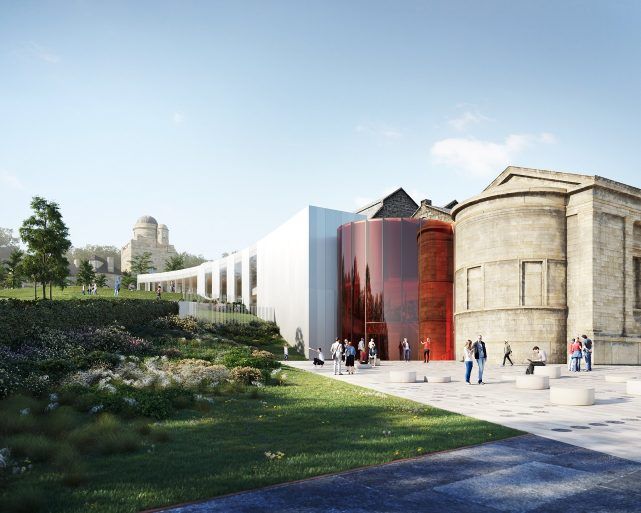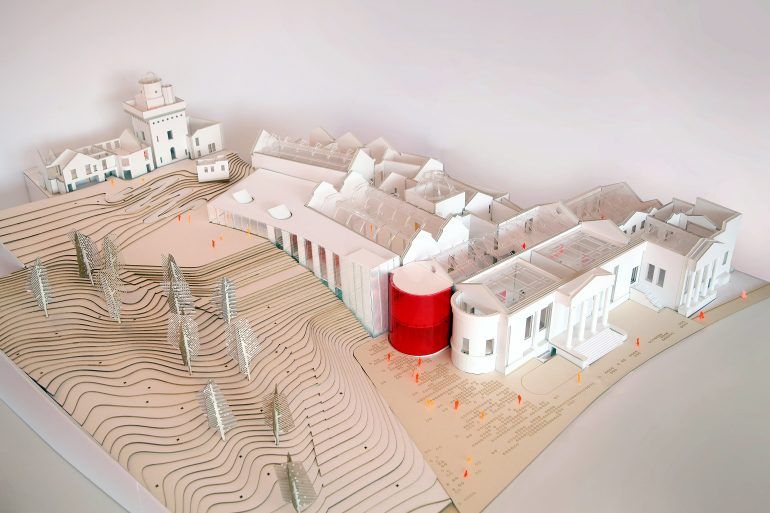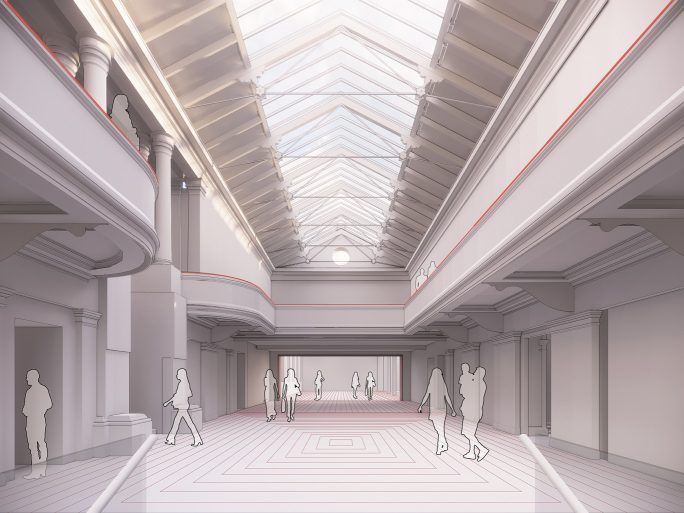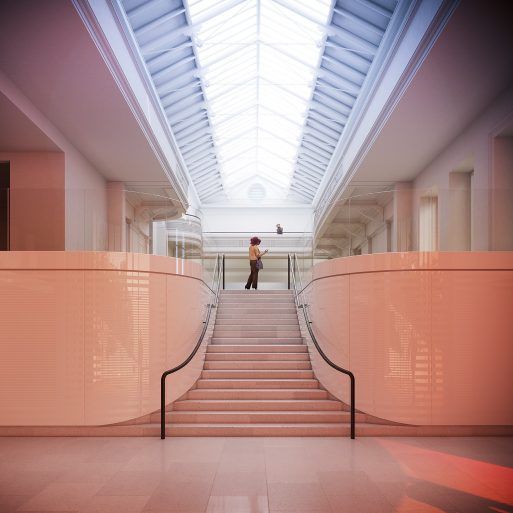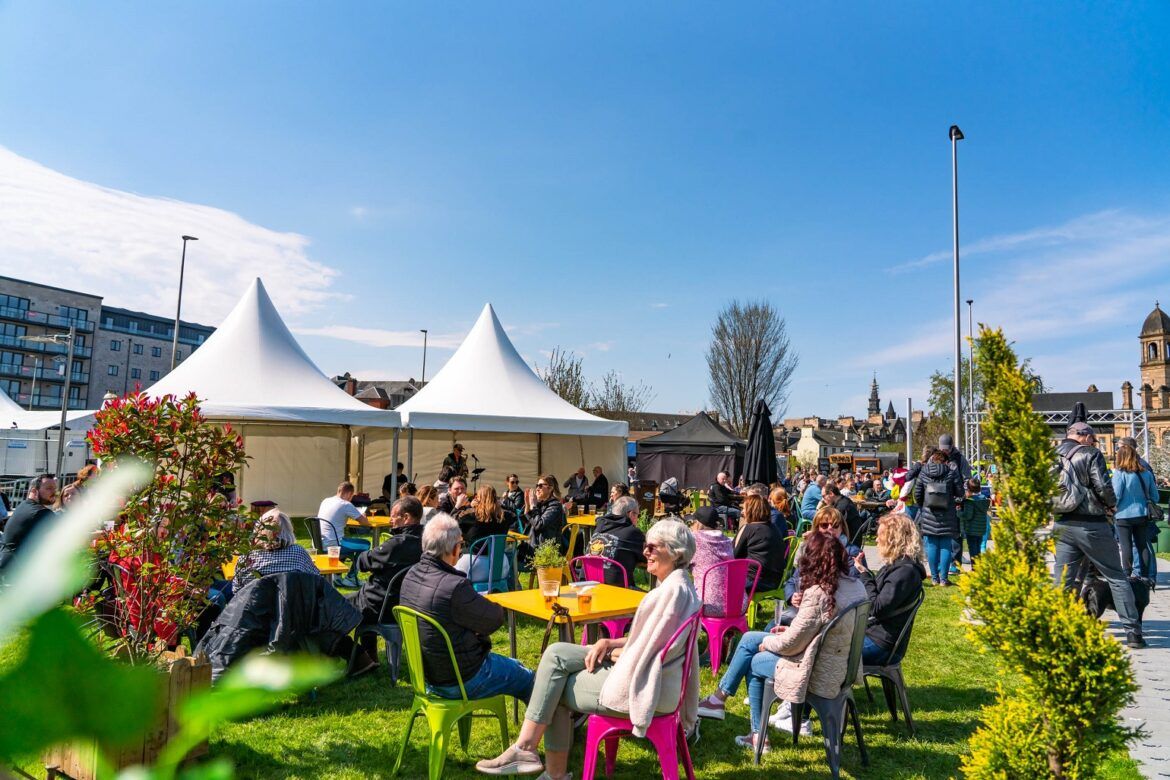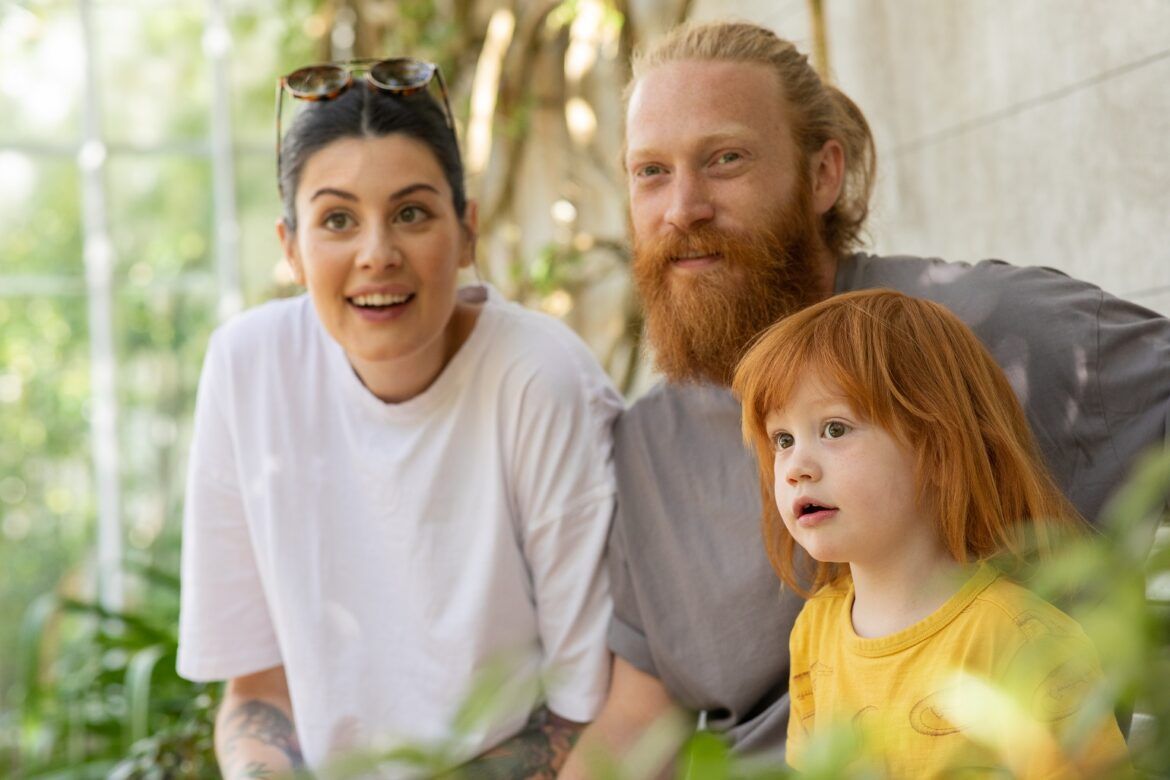The first images have been revealed showing how Paisley Museum will become a world-class destination showcasing the stories of a Scottish town whose influence reached around the globe.
The museum is undergoing a £42m transformation into a leading European museum telling the stories of Paisley’s people and Pattern, and home to its internationally-significant collections.
When it reopens, the reimagined museum is expected to draw audiences from Scotland, the UK and abroad – almost quadrupling visitor numbers to 125,000 a year.
These images show how international architects AL_A – led by Stirling Prize winner Amanda Levete – plan to restore and reinvigorate the museum, including:
– fully accessible entrance courtyard and a dramatic red glazed entrance hall, creating a dynamic and inviting presence on the High Street and a contemporary face for the museum;
– a new wing to the west of the existing building providing step-free access through the museum up to the Coats Observatory (the oldest public observatory in Scotland), containing learning spaces and with views onto the new museum garden;
– an attractive outdoor garden, creating a new public space for the town, and opening up previously-hidden views of the observatory while reconnecting it and the museum to the town’s High Street;
– internal renovations will improve accessibility and circulation, deliver international environmental standards for gallery spaces, and allow the museum to more than double the number of objects on display to 1,200;
– an interactive weaving studio keeping alive the town’s traditional textile skills;
The renovated museum and library buildings will be in conversation with the new. Together they create a cohesive museum campus and a visitor experience of international quality.
The project is expected to create a £79m boost for the local economy over 30 years, with 138 jobs supported during construction, and 48.5 jobs per year through revenue and visitor spending.
